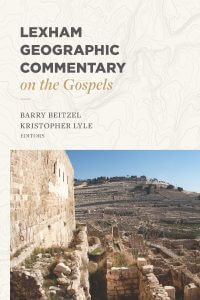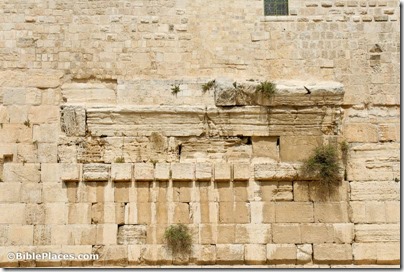Those interested in the Temple Mount in Jerusalem are probably aware that the largest stone is visible on a tour of the “Western Wall Tunnels.” This massive monolith is located just south of Warren’s Gate and measures 43.4 feet (13.55 m) long. There is, however, a longer stone that was discovered only recently.
In Eilat Mazar’s survey of The Walls of the Temple Mount (reviewed here), she identified an even longer stone, and it has been seen by dozens of archaeologists and thousands of visitors for many years without its significance being realized.
The longest stone in the Temple Mount is in the photo below. Can you spot it?
Eilat Mazar determined that the second course of Robinson’s Arch is actually a single stone. The break in the middle is simply a crack in a single stone, not the division between two stones. This stone beats out the other by 2.2 feet (0.7 m), measuring 45.6 feet (14.27 m) long. It is not nearly as tall, so the other retains its title as the largest.
A final note: I learned about this discovery when preparing an essay for the recently released Lexham Geographic Commentary on the Gospels, edited by Barry J. Beitzel.  That essay,
That essay,
“Magnificent Stones and Wonderful Buildings of the Temple Complex,” provides more interesting details about the construction of the Temple and its surrounding structures. This commentary is included with purchase of a Logos 7 base package (silver and up). I plan to say more about this excellent work in the future. In the meantime, there’s a preview here, more details here, and a discussion group here.
I’m told they plan to release the volume as a standalone digital work, with hopefully a printed book to follow.







